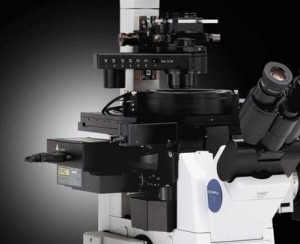
Olympus has released the inverted IX81 microscope with ZDC2 Z-Drift compensation system, said to be suitable for live-cell imaging applications and time-lapse experiments.
The company said the microscope ensures that samples are always in focus, providing very sharp images.
The two modes - continuous and 'one-shot' - enable the completion of any time-lapse experiments.
The Z-Drift compensation system continually monitors the distance between the objective lens and the sample surface, maintaining accurate focus during even the fastest time-lapse experiments.
In contrast, the 'one-shot' mode facilitates applications requiring multiple focal positions.
Providing speed, accuracy and flexibility, the ZDC2 Z-Drift compensation microscope system is suitable for any live-cell imaging, maintaining optimal focus regardless of experiment length or complexity.
The Olympus IX81 microscope systems are stable, rigid and reliable, according to the company.
They utilise proprietary UIS2 objectives, providing good contrast, brightness and resolution, resulting in excellent clarity.
The IX81 combines with the ZDC2 Z-Drift compensation module to provide automatic focal adjustment.
The ZDC2 employs an infrared laser diode to locate the interface between the slide cover slip and the surrounding media.
As the relationship between the sample and the cover slip tends to be consistent, this allows the microscope system to remain focused in response to external factors, via the rapid adjustment of the nosepiece.
Adjustments made using the ZDC2 are said to be fast and accurate.
The high-quality build and optics of the IX81 microscope frame, combined with the focal accuracy and flexibility provided by the ZDC2 Z-Drift compensation system, enables perfect time-lapse imaging of living cells, Olympus said.
The continuous mode of the ZDC2 system provides real-time control of focal accuracy, maintaining focus even during the quickest rapid-capture experiments.
This mode is also suitable for more complex applications, such as total internal reflection microscopy (TIRFM).
For longer time-lapse studies, the 'one-shot' mode can be employed, maintaining accurate focus for hours, days or even weeks at a time.
It also allows users to image multiple sample wells - for example, those found in tissue culture plates - independently adjusting focus to provide crystal-clear images from every well.
The complete system is compatible with a range of Olympus hardware and software, including Cellsens Dimension and Xcellence, as well as integrating fully with environmentally isolated stage incubation systems.





